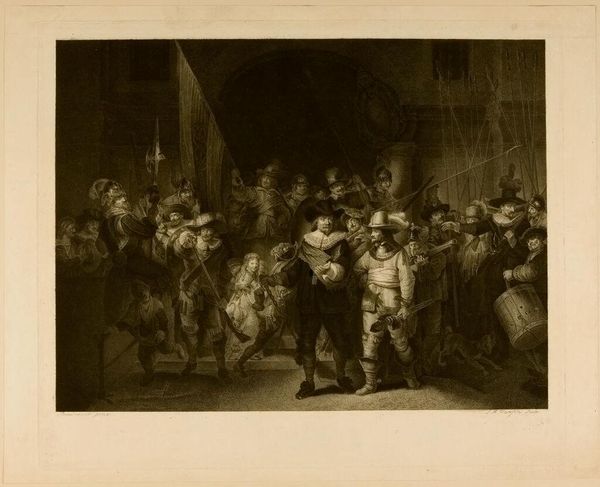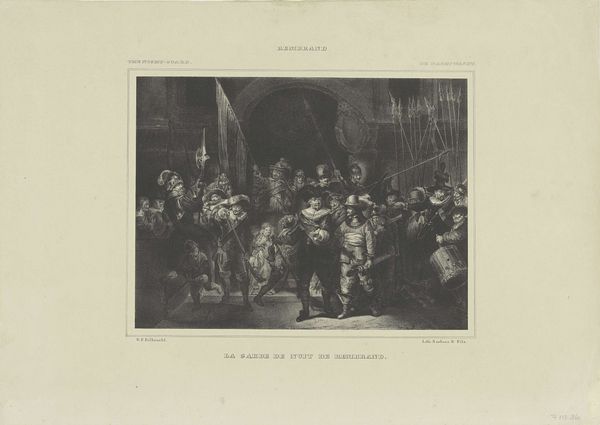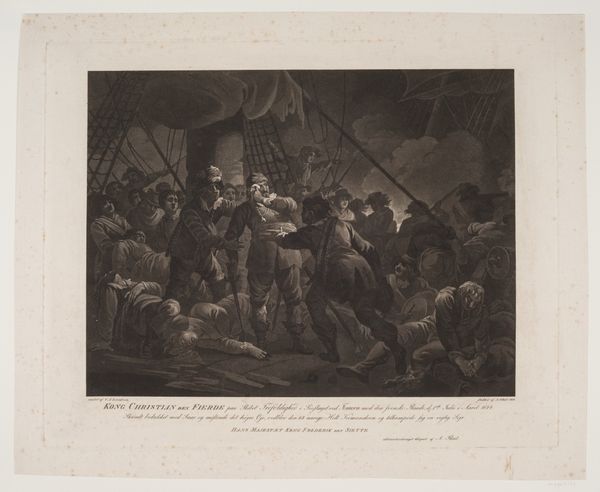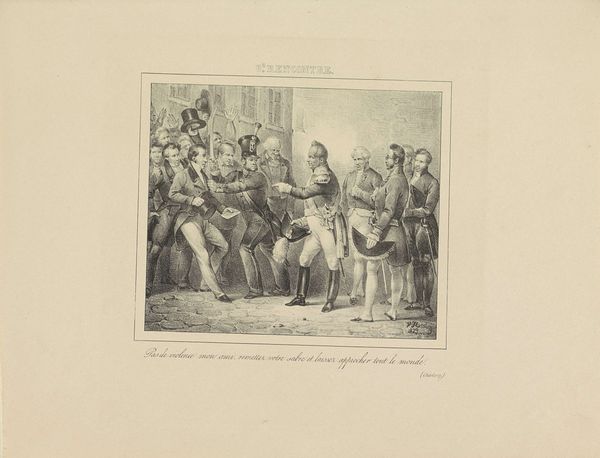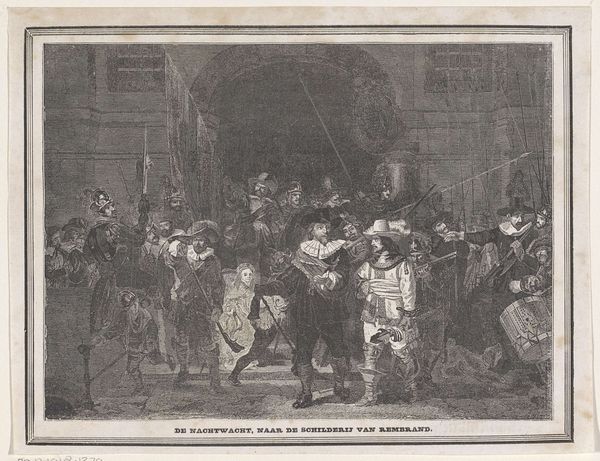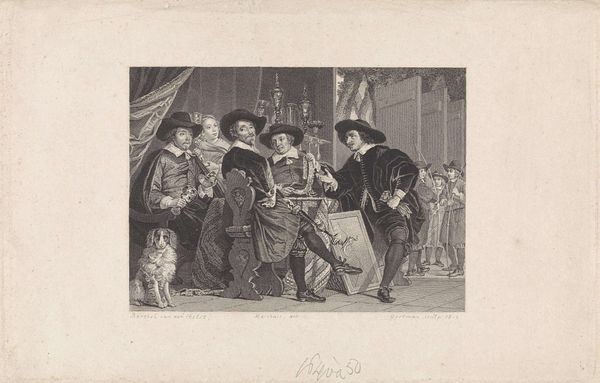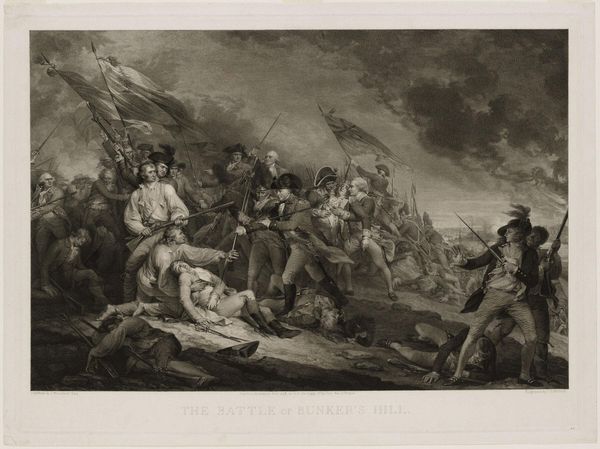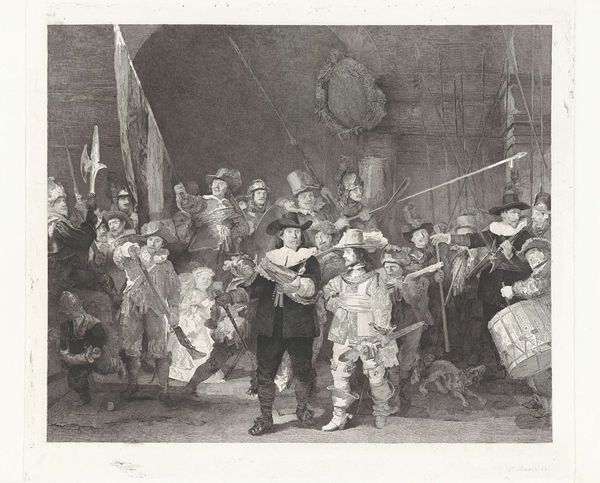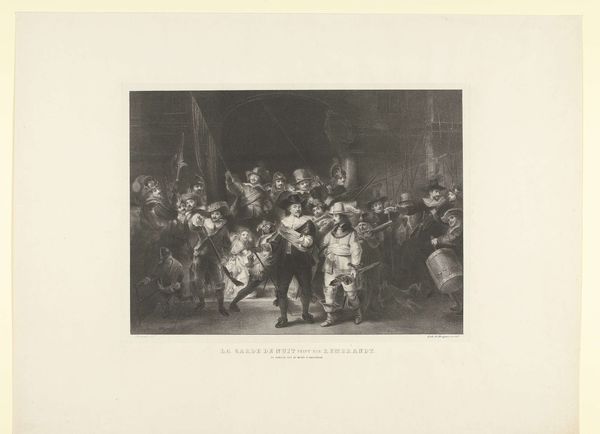
print, engraving
#
dutch-golden-age
# print
#
figuration
#
group-portraits
#
history-painting
#
engraving
#
realism
Dimensions: height 562 mm, width 663 mm
Copyright: Rijks Museum: Open Domain
Curator: Initially, the interplay of dark and light lends a theatrical air. It's captivating how that single light source emphasizes certain figures while shrouding others in mystery. Editor: This is Lambertus Antonius Claessens' engraving from 1797, a reproduction of Rembrandt's famous "The Night Watch" from 1642. Considering its creation in print, it would be insightful to explore its distribution and accessibility during that era. Curator: Agreed. Claessens certainly manages to distill the essence of Rembrandt's masterpiece. Note the texture he evokes merely through the intricate line work, the various planes, the dramatic architecture looming in the background that give us a real sense of space. Editor: It also raises questions about the original painting's reception in the 18th century. This print obviously circulated an image of civic pride to a larger populace, turning that narrative into a commodity through print culture, thus fueling the mythology of the Dutch Golden Age. Curator: Myth-making, yes, precisely. Yet it’s more than mere reproduction; the engraving is a reinterpretation, highlighting aspects Rembrandt implied rather than stated outright. Take, for example, the dramatic positioning of figures—how Claessens manipulates the group portrait into a carefully arranged still. Editor: Beyond its visual composition, we must remember that group portraits such as the original painting in the 17th century were as much about constructing social hierarchies and political allegiances. This engraving extends that function as historical commentary during the late 18th century, with revolutionary fervor building throughout Europe. How the imagery re-emphasized Dutch values of civic duty during such tumultuous times makes this print particularly interesting. Curator: Quite, how art becomes a mirror, or even a prism refracting historical shifts. By its reliance on lines and contrasts, the formal design heightens certain expressions to provide greater insights to this narrative. This elevates beyond simple civic glorification towards universal values—a testament of community spirit transcending eras. Editor: It seems clear to me that considering both its artistic ingenuity and its social implications makes this a richer, more pertinent piece. Thanks. Curator: Indeed. To assess it is to examine, really, the enduring role of artistry over time.
Comments
No comments
Be the first to comment and join the conversation on the ultimate creative platform.

